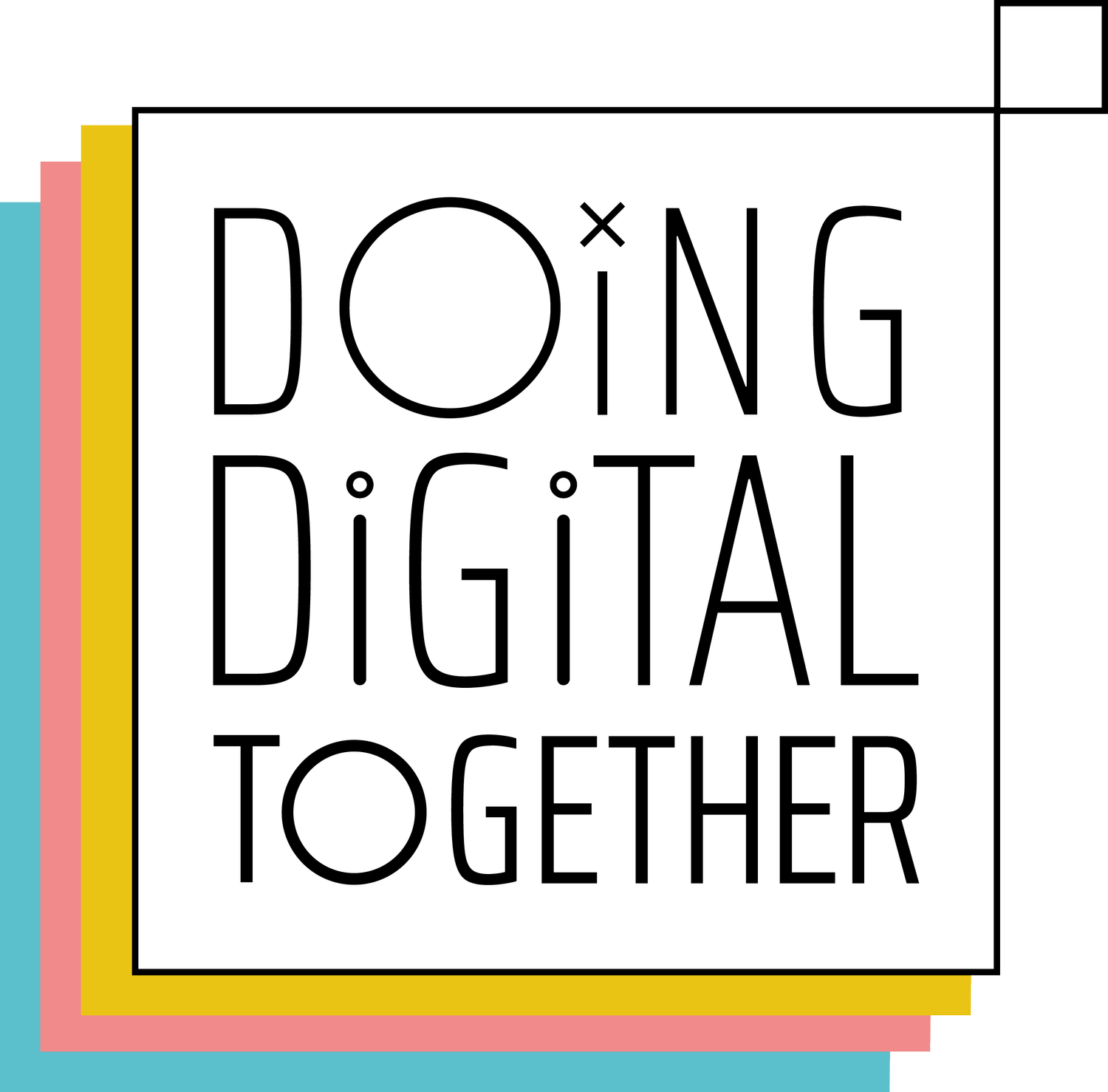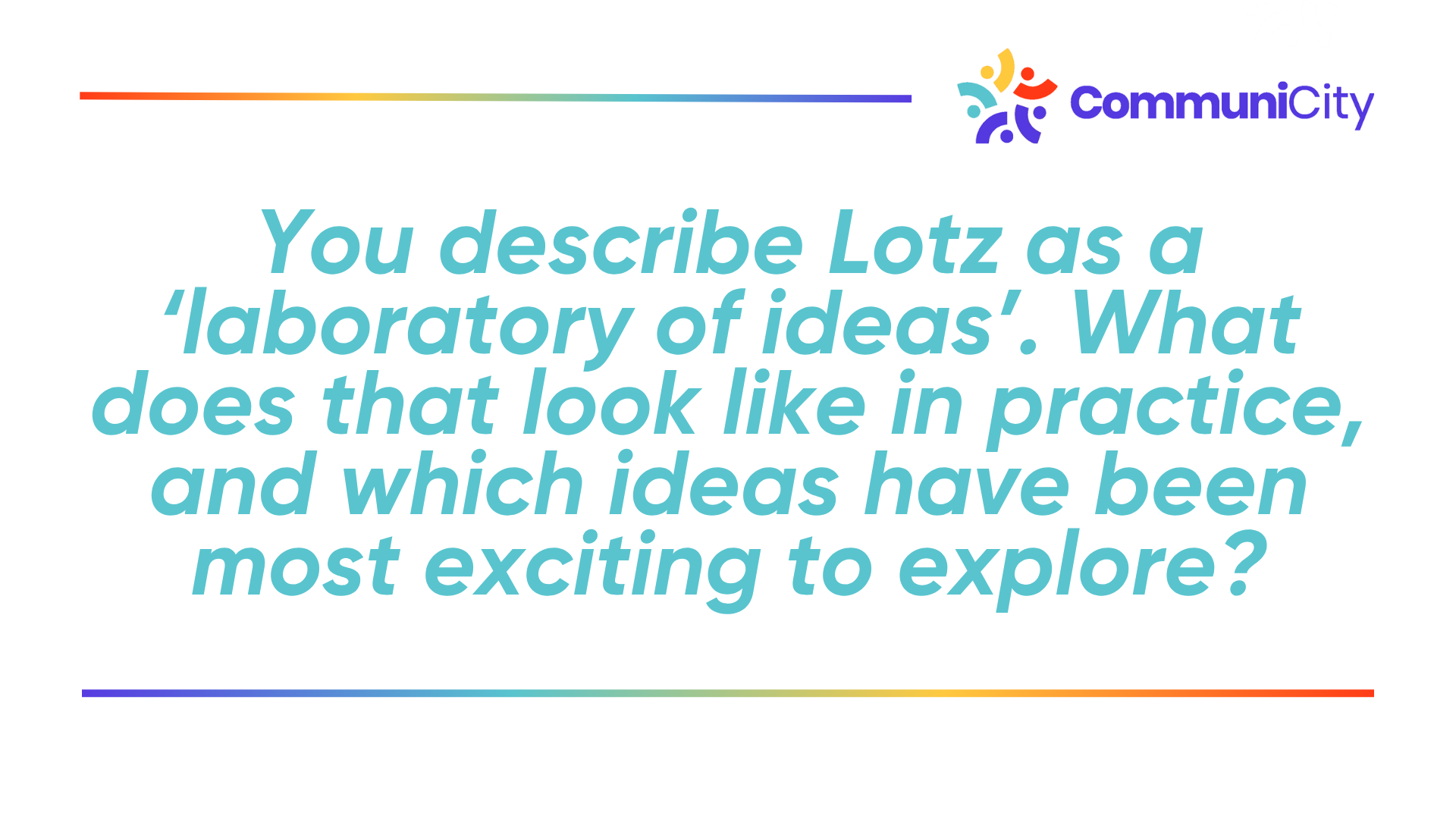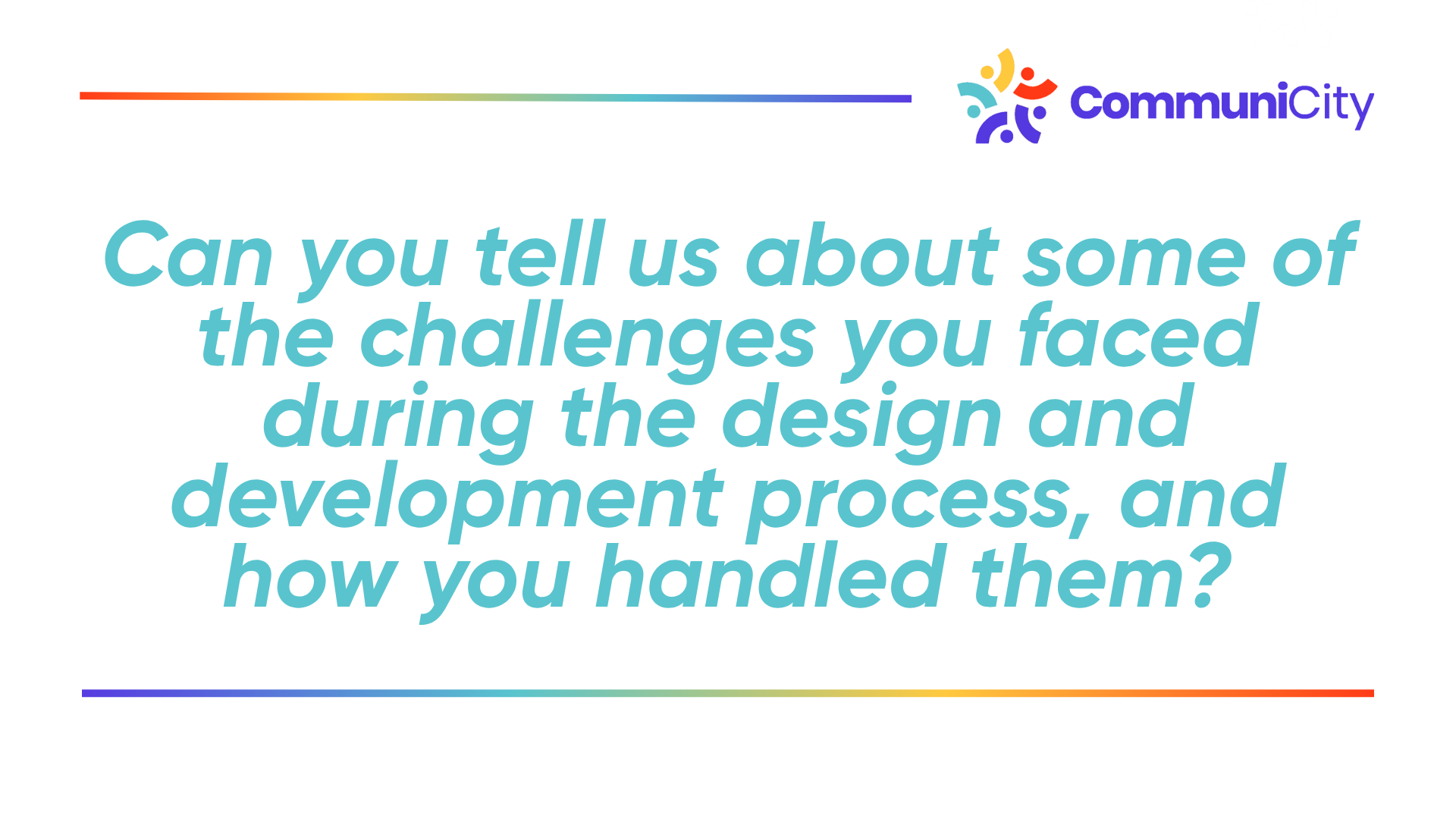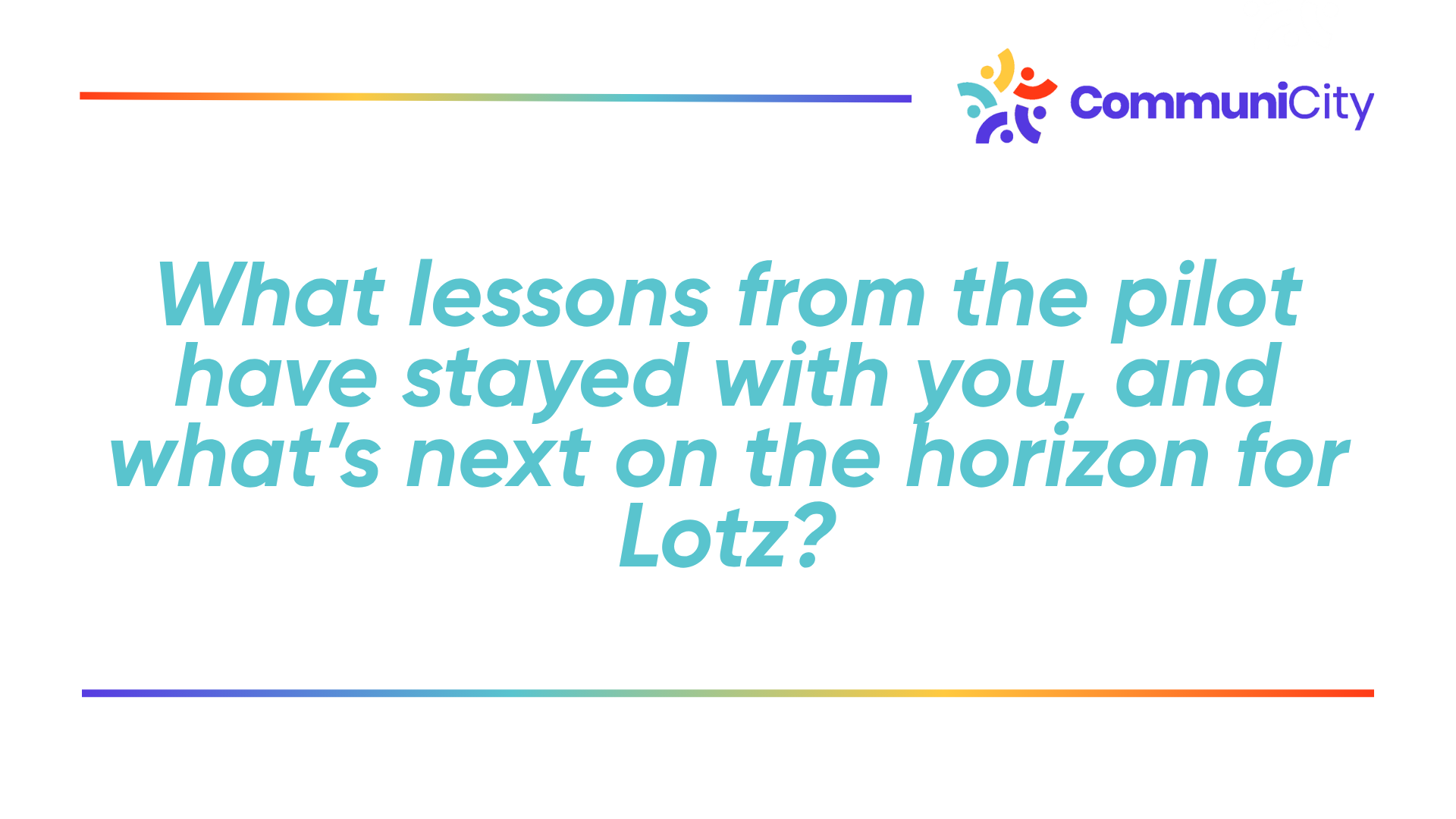Interviewing Riccardo Lozzi
Riccardo Lozzi is the Founder and CEO of Lotz, an innovative Italian tech start-up working at the intersection of communication, culture, information and entertainment.
As part of the EU Horizon funded CommuniCity programme, we partnered with Lotz to develop Community Connect, a WhatsApp based web platform designed to simplify and centralise access to essential poverty support.
Manchester’s Digital Strategy: On your website, you describe Lotz as a “laboratory of ideas”. Could you tell us more about what that looks like in practice and share some of the ideas you’ve been most excited to explore?
Riccardo Lozzi: At Lotz, describing ourselves as a “laboratory of ideas” means that we operate at the intersection of creativity, technology, and social impact, constantly experimenting with new ways to make culture, knowledge, and public services more accessible and engaging. Rather than developing a single product, we treat each project as a prototype - a field test of how storytelling, voice technology, and AI can improve real-life experiences.
Out of this approach came LotzArt, an interactive cultural storytelling platform that uses WhatsApp to deliver immersive and personalized cultural experiences. Unlike traditional apps or classic audio guides, LotzArt doesn’t simply provide didactic information - it invites users to chat with the protagonists of art and culture. The result is a narrative journey that unfolds directly on the visitor’s smartphone, without the need to download any new app or use external devices.
The idea behind LotzArt was born from a very concrete need that affects most people today - we don’t want to download yet another app. Too many tools, too many accounts, too much friction. That’s why we chose WhatsApp -an app that’s already on everyone’s phone. It’s simple, familiar, and intuitive. This makes it not only a powerful practical solution, but also an emotionally resonant and communicative one.
LotzArt was originally conceived for the valorisation of cultural heritage, replacing traditional audio guide services with WhatsApp - the world’s most widely used messaging app. For instance, 79% of internet users in the UK rely on it. Now, after successfully testing it in the cultural sector, we aim to expand it to other areas with the mission of facilitating communication through a single, accessible, and interactive tool.
In fact, we believe it is the best solution for providing essential information to those facing poverty or digital exclusion. A key belief at Lotz is this: innovation is not just about technology, but about how we use it to connect with people.
MDS: You took part in our second CommuniCity challenge, looking at ways to improve access to local support for people experiencing poverty. What initially inspired you to get involved?
RL: We had long been exploring how our platform—originally designed for cultural storytelling—could be adapted to serve broader social purposes. The CommuniCity challenge came at exactly the right time: it gave us the opportunity to develop and test a pilot project that translated the core strengths of LotzArt into the realm of social communication. That’s how LotzArt Community Connect was born.
Our initial inspiration was simple but powerful: we wanted to make local support services as easy to access as a message from a friend. We already knew that WhatsApp was an incredibly effective tool for delivering cultural experiences in a natural and human way. So we asked ourselves - why not use the same approach to connect people with essential information and community resources, especially those who are often digitally excluded?
Through the CommuniCity challenge, we were able to co-design a prototype with local partners and test it in a real urban context. The project allowed us to validate the idea that storytelling, empathy, and familiarity can be just as important as functionality when you're trying to reach people facing poverty or social vulnerability.
Instead of creating a new app or platform - which often ends up excluding the very people it’s meant to help - we implemented LotzArt with the Community Connect function to work entirely within WhatsApp. Users receive clear, text-based information about services such as food banks, housing, family support, and mental health assistance - with no need for downloads, logins, or complicated interfaces.
Each service includes direct links to get in touch with the relevant organization, so users can immediately access further details, request support, or speak with a representative - right from within the chat.
The CommuniCity pilot helped us confirm something we deeply believe: the most inclusive technology is often the one people already use. By meeting people where they are - on a platform they trust - we can remove friction and restore a sense of dignity and agency in how they access help.
MDS: During the pilot, you worked closely with VCSEs to test and refine the Community Connect platform. What made community co-creation such a vital part of your approach?
RL: Community co-creation has always been at the heart of our method. At Lotz, we believe that technology should adapt to people - not the other way around. That’s why working directly with VCSEs was essential during the pilot phase of Community Connect.
These organisations are deeply rooted in their local contexts. They understand the real needs, language, and habits of the communities they serve. Their feedback allowed us to move beyond assumptions and design a platform that is not only functional, but also relevant, empathetic, and accessible.
We didn’t just test the tool - we co-designed it together. From refining how information is structured in the chat, to identifying the most urgent services to highlight, to ensuring the tone felt human and respectful, every improvement came from real conversations with community partners.
A key moment in this process was the co-creation workshop hosted by Northmoor Community Association, which we had the opportunity to attend in person. Meeting the people behind these organisations face-to-face was incredibly valuable - it allowed us to truly listen, exchange ideas openly, and shape the platform based on their lived experience and daily work on the ground.
We were especially inspired by the grassroots organisations whose enthusiasm and active participation helped us further improve the platform. Their commitment reinforced our belief that digital tools can only be effective when they’re built in dialogue with the people who will actually use them—or help others use them.
In this sense, Community Connect is not just a digital solution - it’s a shared space for collaboration between technology and community action.
MDS: Community Connect received a warm reception from many of the organisations involved in the pilot, but it wasn’t all smooth sailing! Can you tell us about some of the challenges you faced during the design and development process, and how you handled them?
RL: Every time an innovation is proposed, challenges are bound to arise - especially when the goal is to create something that feels effortless for users. The simpler an experience appears on the surface, the more complex the work behind it tends to be. But these difficulties are also what make the process stimulating and rewarding - they push the team to improve and adapt constantly.
One of the biggest challenges was balancing clarity and completeness. The aim was to deliver useful, essential information without overwhelming users, particularly those in vulnerable or precarious situations. This required making thoughtful decisions about content, message structure, and tone - ensuring communication remained empathetic, human, and easy to follow.
Another key challenge was that this was LotzArt’s very first project outside the cultural sector, where the platform was originally born. This meant stepping outside our comfort zone and applying our storytelling and design approach to a completely new field - one with different expectations, sensitivities, and real-world use cases. It was both a challenge and a valuable learning opportunity.
There were also technical limitations inherent in working with WhatsApp. While it’s highly accessible and familiar, it’s not a platform designed for custom development. This required creative problem-solving to guide users through choices, present structured content, and simulate a sense of interaction - all without relying on visuals, menus, or app-like interfaces.
At the same time, we were collaborating with a wide range of VCSEs, each with different missions, languages, and priorities. This diversity enriched the project but also demanded a flexible and modular system, capable of adapting to varied needs while maintaining consistency and ease of use for the end user.
What made a real difference was the collaborative approach we embraced from the start. The continuous feedback from local organisations, their openness to experimentation, and their commitment to the co-design process were crucial in refining the platform. Thanks to those challenges and collaborations, Community Connect is now a more thoughtful, resilient platform - designed not just for communities, but with them.
MDS: While the pilot has come to an end, the learnings and insights we’ve gained will inform our work going forwards. Which lessons have stayed with you, and what’s next on the horizon for Lotz?
RL: We currently have several ongoing projects with Italian public administrations in the cultural sector, where LotzArt continues to offer immersive, chat-based experiences through WhatsApp. But at the same time, we’re deeply committed to continuing the Community Connect pathway. Our goal is to propose and scale both services - not only in Italy, but across Europe - adapting them to the needs of local governments, cultural institutions, community organisations, and private sector partners.
The pilot taught us that simplicity, accessibility, and empathy aren’t just “nice to have” features - they are essential. Especially when working with communities facing poverty or digital exclusion, the success of a tool depends not on its sophistication, but on how well it fits into people’s real lives. That’s a principle we’re carrying forward in everything we do.
Another powerful lesson was the value of proximity and co-creation. Listening to community-based organisations, working alongside them, and designing iteratively based on their feedback helped us shape a solution that was not only functional, but meaningful. That human-centred, collaborative approach will continue to guide all of our future pilots - whether in culture, health, social care, or education.
Looking ahead, we are now working to integrate AI-driven personalisation into both LotzArt and Community Connect, so that users can receive information tailored to their specific needs, preferences, and context—all within a familiar and inclusive interface like WhatsApp. We also want to explore how this hybrid model - combining storytelling and access to services - can support social campaigns, civic engagement, and inclusive public communication.
Ultimately, we believe that technology should feel human, helpful, and close. That’s the vision we’re building toward: tools that don’t just inform, but truly connect.






